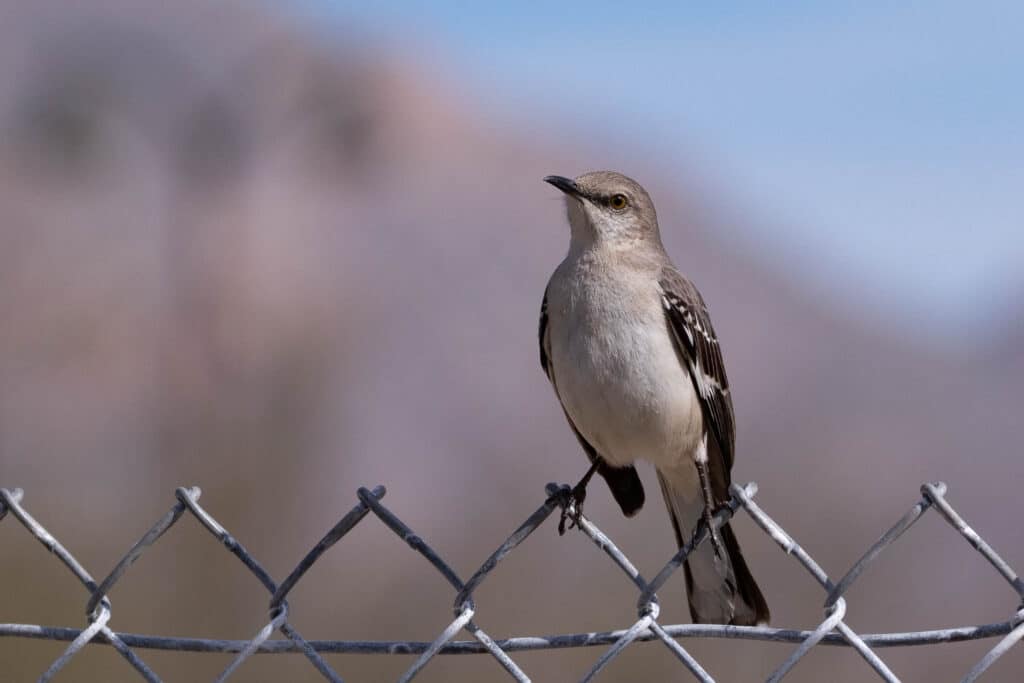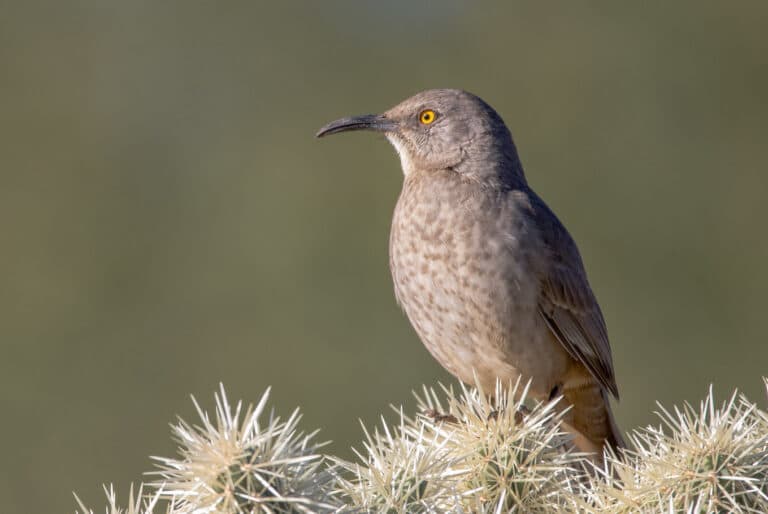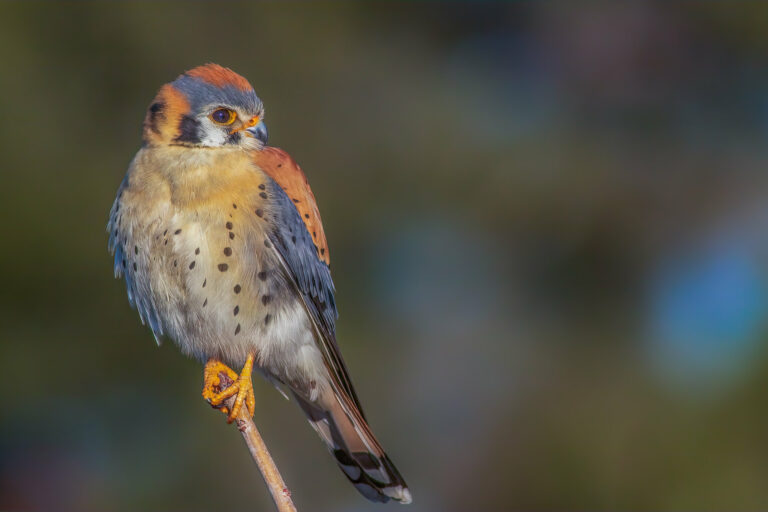Bird watching does not need to be one of your hobbies for you to be familiar with the Northern Mockingbird. Their habit of endless singing, frequently at night, would generate numerous questions like “What is that bird and why won’t it let me sleep?” to Tucson Audubon’s Emergency Bird Hotline … if one existed. Mockingbirds are very common over much of North America, and they can be found in farmland, open desert, and urban areas, which is why they interact so frequently with humans.
Northern Mockingbirds are accomplished mimics of bird song and other sounds, and an individual bird’s repertoire can contain over 200 song types! Add to this the facts that males and females sing for about ¾ of the year, unmated males may sing all night, and birds keep learning new songs over a lifetime—you better just keep your windows shut at night! There is a good reason for all this singing though—it appears that song diversity serves mainly to attract females and is not so much associated with territorial defense.
Northern Mockingbirds are medium-sized, mostly gray with blackish wings and a long tail. Large white wing patches are conspicuous in flight and during a mysterious behavior: mockingbirds occasionally appear to be dancing as they open and close their wings over and over. This flashing is still unexplained but may be utilized in disorienting prey or predator defense. They will also vigorously defend their territory and are known to attack pets and people! We’ll set up that Hotline for you right away.




